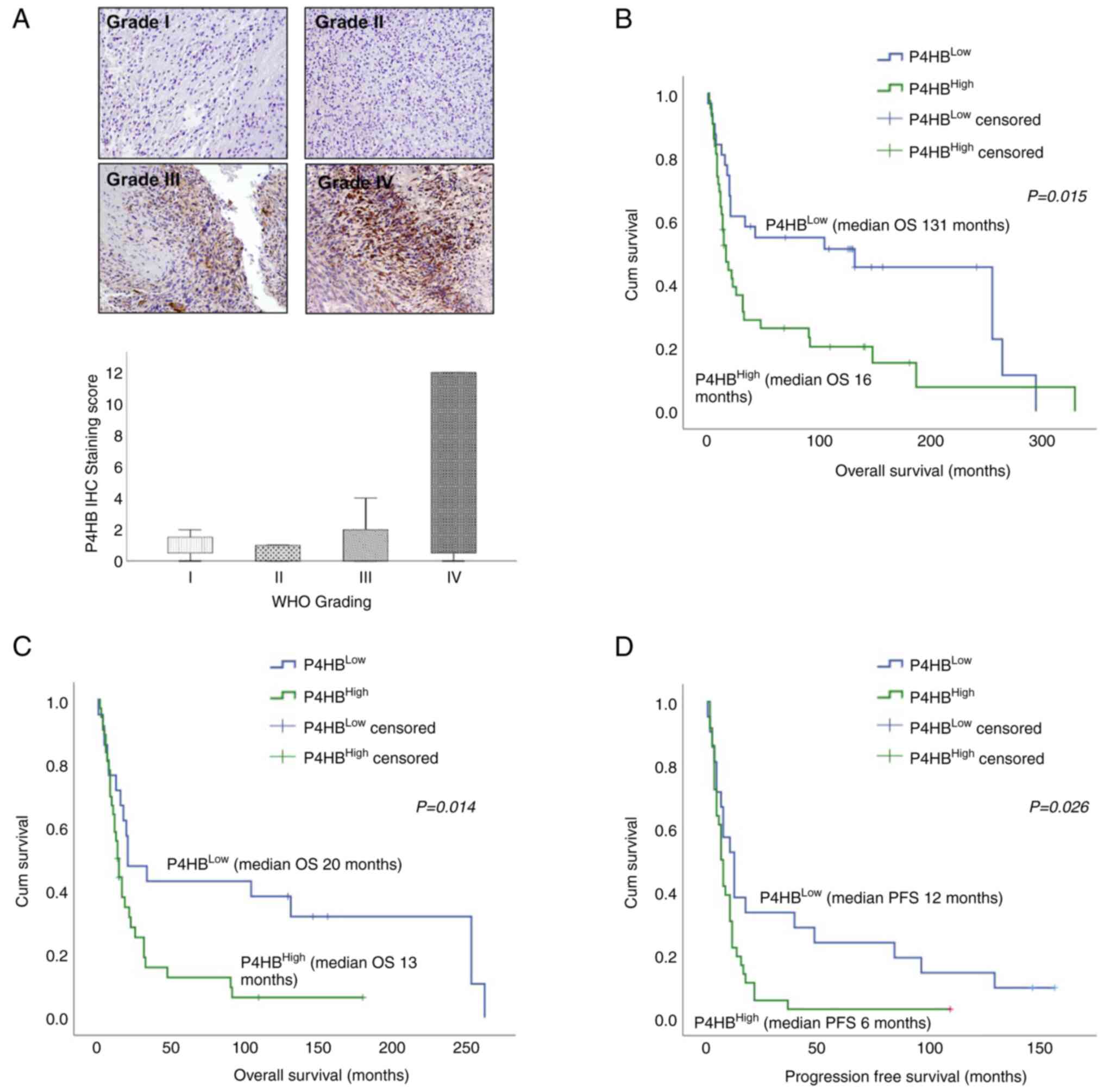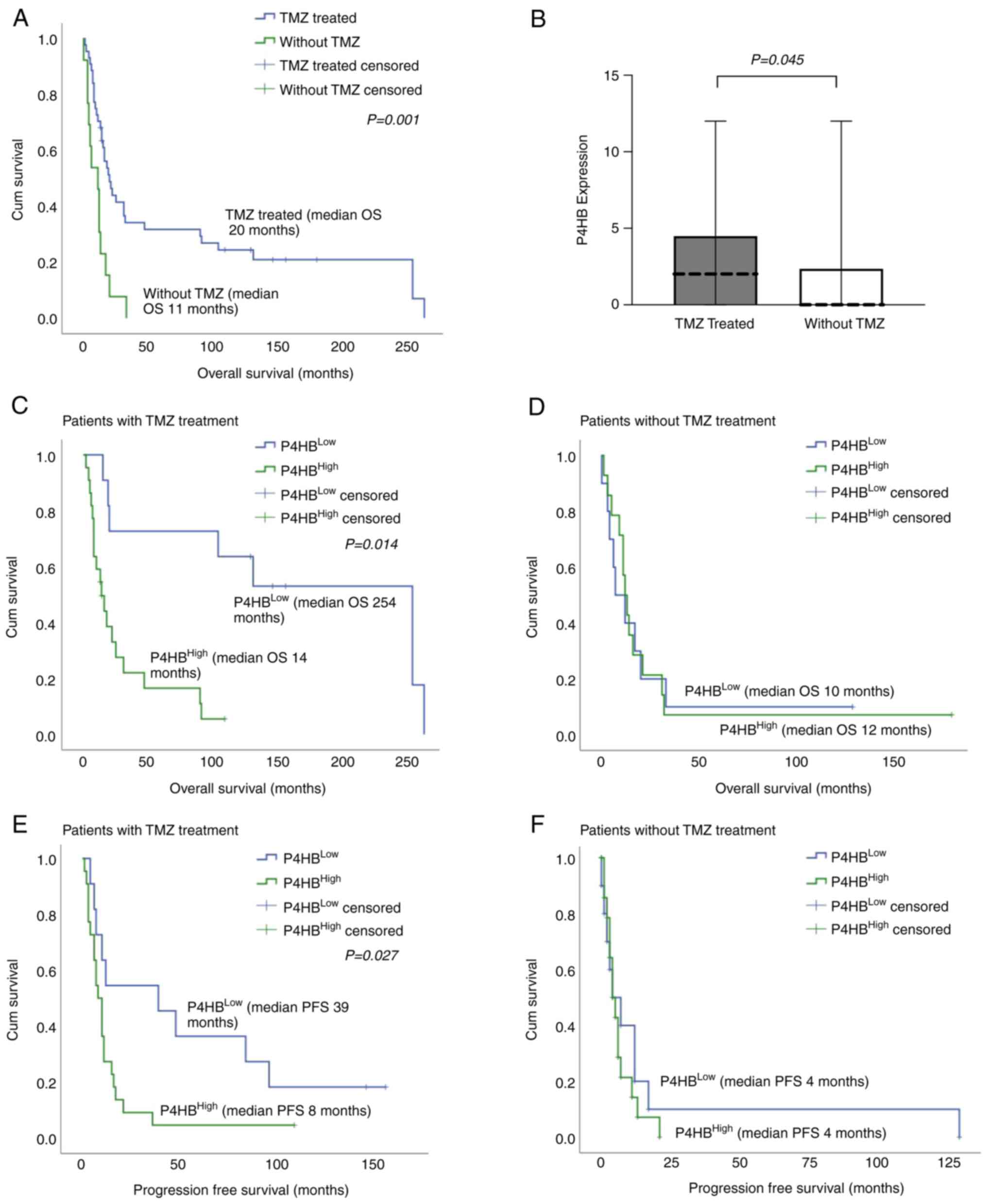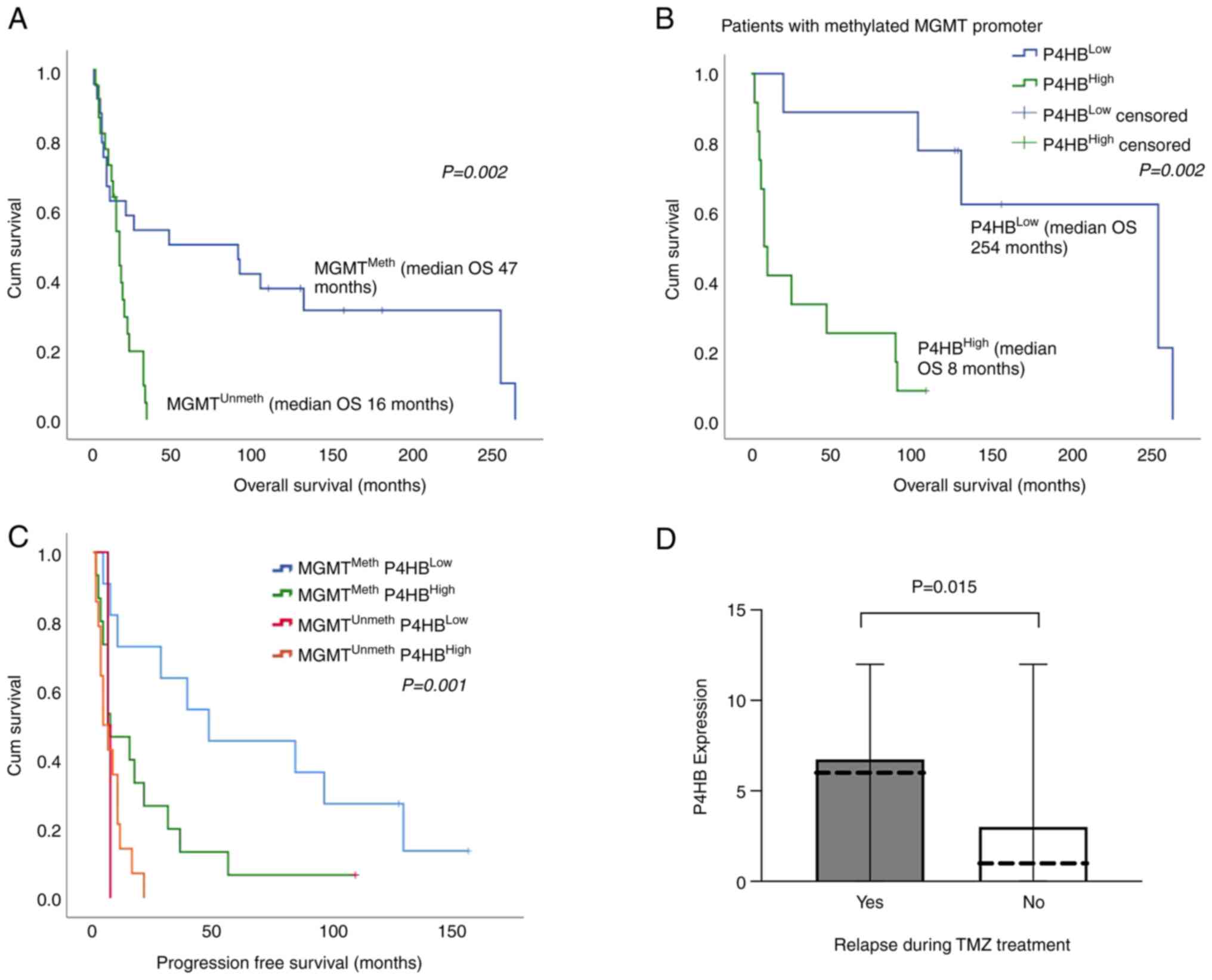|
1
|
Di Carlo DT, Cagnazzo F, Benedetto N,
Morganti R and Perrini P: Multiple high-grade gliomas:
Epidemiology, management, and outcome. A systematic review and
meta-analysis. Neurosurg Rev. 42:263–275. 2019. View Article : Google Scholar : PubMed/NCBI
|
|
2
|
Stupp R, Mason WP, van den Bent MJ, Weller
M, Fisher B, Taphoorn MJ, Belanger K, Brandes AA, Marosi C, Bogdahn
U, et al: Radiotherapy plus concomitant and adjuvant temozolomide
for glioblastoma. N Engl J Med. 352:987–996. 2005. View Article : Google Scholar : PubMed/NCBI
|
|
3
|
Hegi ME, Diserens AC, Gorlia T, Hamou MF,
de Tribolet N, Weller M, Kros JM, Hainfellner JA, Mason W, Mariani
L, et al: MGMT gene silencing and benefit from temozolomide in
glioblastoma. N Engl J Med. 352:997–1003. 2005. View Article : Google Scholar : PubMed/NCBI
|
|
4
|
Sun S, Lee D, Ho AS, Pu JK, Zhang XQ, Lee
NP, Day PJ, Lui WM, Fung CF and Leung GK: Inhibition of prolyl
4-hydroxylase, beta polypeptide (P4HB) attenuates temozolomide
resistance in malignant glioma via the endoplasmic reticulum stress
response (ERSR) pathways. Neuro Oncol. 15:562–577. 2013. View Article : Google Scholar : PubMed/NCBI
|
|
5
|
Malhotra JD and Kaufman RJ: The
endoplasmic reticulum and the unfolded protein response. Semin Cell
Dev Biol. 18:716–731. 2007. View Article : Google Scholar : PubMed/NCBI
|
|
6
|
Luo B and Lee AS: The critical roles of
endoplasmic reticulum chaperones and unfolded protein response in
tumorigenesis and anticancer therapies. Oncogene. 32:805–818. 2013.
View Article : Google Scholar : PubMed/NCBI
|
|
7
|
Sun S, Wong TS, Zhang XQ, Pu JK, Lee NP,
Day PJ, Ng GK, Lui WM and Leung GK: Protein alterations associated
with temozolomide resistance in subclones of human glioblastoma
cell lines. J Neurooncol. 107:89–100. 2012. View Article : Google Scholar : PubMed/NCBI
|
|
8
|
Sun S, Kiang KMY, Ho ASW, Lee D, Poon MW,
Xu FF, Pu JKS, Kan ANC, Lee NPY, Liu XB, et al: Endoplasmic
reticulum chaperone prolyl 4-hydroxylase, beta polypeptide (P4HB)
promotes malignant phenotypes in glioma via MAPK signaling.
Oncotarget. 8:71911–71923. 2017. View Article : Google Scholar : PubMed/NCBI
|
|
9
|
Xipell E, Aragón T, Martinez-Velez N, Vera
B, Idoate MA, Martínez-Irujo JJ, Garzón AG, Gonzalez-Huarriz M,
Acanda AM, Jones C, et al: Endoplasmic reticulum stress-inducing
drugs sensitize glioma cells to temozolomide through downregulation
of MGMT, MPG, and Rad51. Neuro Oncol. 18:1109–1119. 2016.
View Article : Google Scholar : PubMed/NCBI
|
|
10
|
Nanegrungsunk D, Onchan W, Chattipakorn N
and Chattipakorn SC: Current evidence of temozolomide and
bevacizumab in treatment of gliomas. Neurol Res. 37:167–183. 2015.
View Article : Google Scholar : PubMed/NCBI
|
|
11
|
Messaoudi K, Clavreul A and Lagarce F:
Toward an effective strategy in glioblastoma treatment. Part I:
Resistance mechanisms and strategies to overcome resistance of
glioblastoma to temozolomide. Drug Discov Today. 20:899–905. 2015.
View Article : Google Scholar : PubMed/NCBI
|
|
12
|
Wait SD, Prabhu RS, Burri SH, Atkins TG
and Asher AL: Polymeric drug delivery for the treatment of
glioblastoma. Neuro Oncol. 17 (Suppl 2):ii9–ii23. 2015. View Article : Google Scholar : PubMed/NCBI
|
|
13
|
Tan AC, Ashley DM, Lopez GY, Malinzak M,
Friedman HS and Khasraw M: Management of glioblastoma: State of the
art and future directions. CA Cancer J Clin. 70:299–312. 2020.
View Article : Google Scholar : PubMed/NCBI
|
|
14
|
Liu K, Tsung K and Attenello FJ:
Characterizing cell stress and GRP78 in glioma to enhance tumor
treatment. Front Oncol. 10:6089112020. View Article : Google Scholar : PubMed/NCBI
|
|
15
|
Liu Y, Ji W, Shergalis A, Xu J, Delaney
AM, Calcaterra A, Pal A, Ljungman M, Neamati N and Rehemtulla A:
Activation of the unfolded protein response via inhibition of
protein disulfide isomerase decreases the capacity for DNA repair
to sensitize glioblastoma to radiotherapy. Cancer Res.
79:2923–2932. 2019. View Article : Google Scholar : PubMed/NCBI
|
|
16
|
Chen X and Cubillos-Ruiz JR: Endoplasmic
reticulum stress signals in the tumour and its microenvironment.
Nat Rev Cancer. 21:71–88. 2021. View Article : Google Scholar : PubMed/NCBI
|
|
17
|
Peñaranda Fajardo NM, Meijer C and Kruyt
FA: The endoplasmic reticulum stress/unfolded protein response in
gliomagenesis, tumor progression and as a therapeutic target in
glioblastoma. Biochem Pharmacol. 118:1–8. 2016. View Article : Google Scholar : PubMed/NCBI
|
|
18
|
Peng Z, Chen Y, Cao H, Zou H, Wan X, Zeng
W, Liu Y, Hu J, Zhang N, Xia Z, et al: Protein disulfide isomerases
are promising targets for predicting the survival and tumor
progression in glioma patients. Aging (Albany NY). 12:2347–2372.
2020. View Article : Google Scholar : PubMed/NCBI
|
|
19
|
Gruenewald TL, Seeman TE, Ryff CD,
Karlamangla AS and Singer BH: Combinations of biomarkers predictive
of later life mortality. Proc Natl Acad Sci USA. 103:14158–14163.
2006. View Article : Google Scholar : PubMed/NCBI
|
|
20
|
Kohsaka S, Wang L, Yachi K, Mahabir R,
Narita T, Itoh T, Tanino M, Kimura T, Nishihara H and Tanaka S:
STAT3 inhibition overcomes temozolomide resistance in glioblastoma
by downregulating MGMT expression. Mol Cancer Ther. 11:1289–1299.
2012. View Article : Google Scholar : PubMed/NCBI
|
|
21
|
Huang H, Xiang Y, Su B, Xiong W and Zhang
X: Potential roles for Gfi1 in the pathogenesis and proliferation
of glioma. Med Hypotheses. 80:629–632. 2013. View Article : Google Scholar : PubMed/NCBI
|
|
22
|
Franceschi E, Lamberti G, Visani M,
Paccapelo A, Mura A, Tallini G, Pession A, De Biase D, Minichillo
S, Tosoni A, et al: Temozolomide rechallenge in recurrent
glioblastoma: When is it useful? Future Oncol. 14:1063–1069. 2018.
View Article : Google Scholar : PubMed/NCBI
|

















